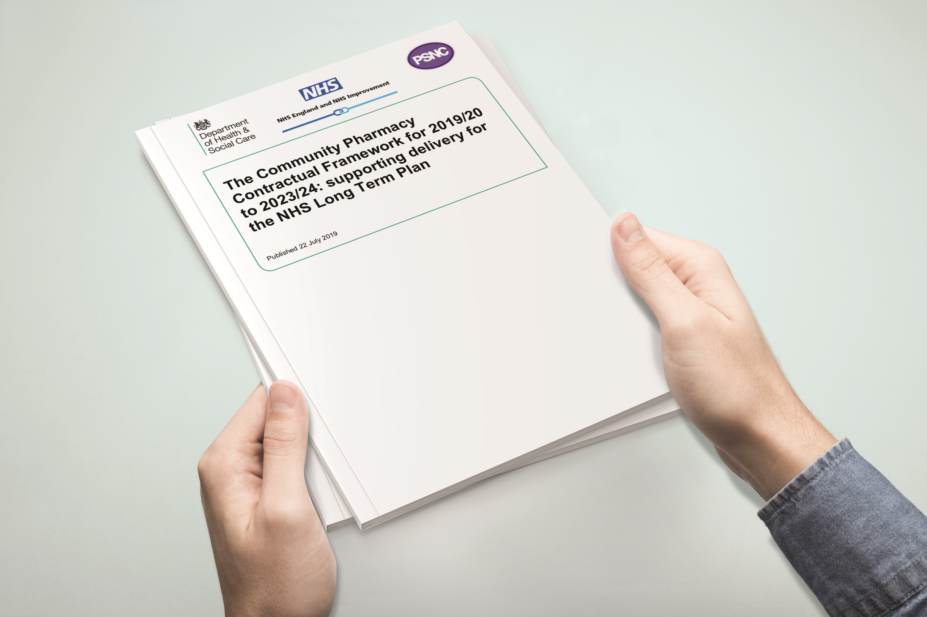
Shutterstock.com / JL
In recent years, an over-reliance on dispensing funding for community pharmacy has held back the sector’s development. But that could be all set to change.
In his foreword to the new community pharmacy contract, health secretary Matt Hancock promises a “fundamental shift towards clinical service delivery” and, to some degree, his words are backed up in the subsequent pages.
But there are many parts of this five-year deal — which was published on 22 July 2019 and agreed on by the Pharmaceutical Services Negotiating Committee — that may prove a difficult pill to swallow for business owners. In particular, the decision to freeze overall investment in the sector at £2.59bn until 2024, while gradually shrinking the level of funding for dispensing over time by an unspecified amount.
With inflation running at around 2% and many pharmacy contractors already operating their dispensing activity at a loss, this news may cause considerable pain. The hundreds of store closures announced by multiple pharmacy chains over the past few months may be a foreshadowing of an even greater retraction of the sector from high streets across the country — indeed, the document itself explicitly states that there are more pharmacies “than may be necessary” and says it will encourage greater consolidation.
Another attempt to change the law on hub-and-spoke dispensing may also cause controversy, and the contract’s proposal of legislative changes to “better use the skill mix in pharmacies” may set alarm bells ringing. Some of the more specific requirements buried in the small print seem slightly bizarre – such as the new incentive for community pharmacies to cut back on the volume of sugary drinks they sell.
However, the major shift in the new framework comes in the amount of funding allocated to clinical services. Over the next five years, funding will be more than doubled from around 4% of current funding to around 11% by 2024. The sector has been crying out for this decision in recent years, with multiple policy documents published by pharmacy organisations calling for a more clinical role for community pharmacy.
Potentially groundbreaking in-pharmacy clinical services will undergo testing, with those deemed successful to be ‘mainstreamed’ through primary care networks
The proposals also include plans for all pharmacies to become ‘healthy living pharmacies’, meaning they will have the capacity to deliver smoking cessation and weight management interventions. They also outline plans for the new medicine service to be expanded to include further indications, while pharmacies could increasingly become the recipients of referrals for minor ailments from all corners of urgent care.
Meanwhile, potentially groundbreaking pharmacy clinical services will undergo testing, with those deemed successful to be ‘mainstreamed’ through primary care networks. The document says these may include detecting undiagnosed cardiovascular disease; routine monitoring of women taking oral contraception; and point-of-care testing for colds and flu. If some, although not all, of these services become incorporated into the everyday work of community pharmacy, it will mark a major turning point in the sector.
There are the first stirrings of a sea change here. If Hancock is to be believed, patients will increasingly be directed to their pharmacy for care and they will see a greater range of NHS services provided there. The only brake on this will be the ability of community pharmacy to incorporate new technology and efficiencies in their dispensing function, while funding is – in real terms – falling. This is in marked contrast to Wales and Scotland, where community pharmacies have received a boost in funding in order to provide more NHS services.
Much of the funding for clinical services is in the “unallocated” column of the financial breakdown in the document, which is going to prove difficult for pharmacy owners to plan for.
There is much to welcome in this contract and greater clarity on the future destination of the sector within the NHS was badly needed. Nevertheless, the transition phase for community pharmacy is going to be tough.


